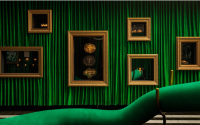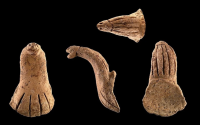Toronto’s Indigenous Curatorial Collective Sends Open Letter to Art Gallery of Ontario Decrying Wanda Nanibush’s Departure
In the latest of a swarm of open letters that have beleaguered the art world, the Toronto-based Indigenous Curatorial Collective (ICCA) has written a letter to the Art Gallery of Ontario (AGO) about the sudden departure last year of their curator of Indigenous art Wanda Nanibush.
Nanibush, the first curator of Canadian and Indigenous art at the AGO, left the organization in November after “seven incredibly productive years” in what AGO director and chief executive Stephan Jost told ARTnews was a “mutual decision.”
The ICCA’s letter, which was first reported on by The Art Newspaper, demands that the organization “release Nanibush from any legal obligations preventing her from speaking publicly about her tenure and dismissal, about how she sees what happened and why.”
It’s unclear if any such legal obligations or agreements exist. When asked for comment an AGO spokesperson said “normally the AGO does not comment on internal private matters,” and referred to Jost’s statement that was released after Nanibush’s departure.
Nanibush’s departure was first reported by The Globe and Mail, which described “years of outspokenness that caused friction with some at the gallery and in the arts community – which came to a head with the Israel-Hamas war.”
Her departure came at the same time as a letter from the Israel Museums and Arts, Canada (IMAAC) and signed by its leadership team that accused Nanibush of “posting inflammatory, inaccurate rants against Israel” and “hate speech”.
The IMACC letter pointed to a 2016 article by Nanibush that draws an association between the Indigenous people of Canada and the Palestinian people in which she wrote that “colonization marks a before and after where identity is radically altered by loss.”
Three separate letters followed the IMACC letter, each lambasting the AGO for Nanibush’s departure. Jost responded with an open letter of his own, in which he writes “the AGO, along with many other cultural institutions, is being asked to better define the rights and limits of political and artistic expression in a locally diverse but globally complex environment. We will go through a process to listen, to understand multiple perspectives and then together we will articulate our institutional position.”



